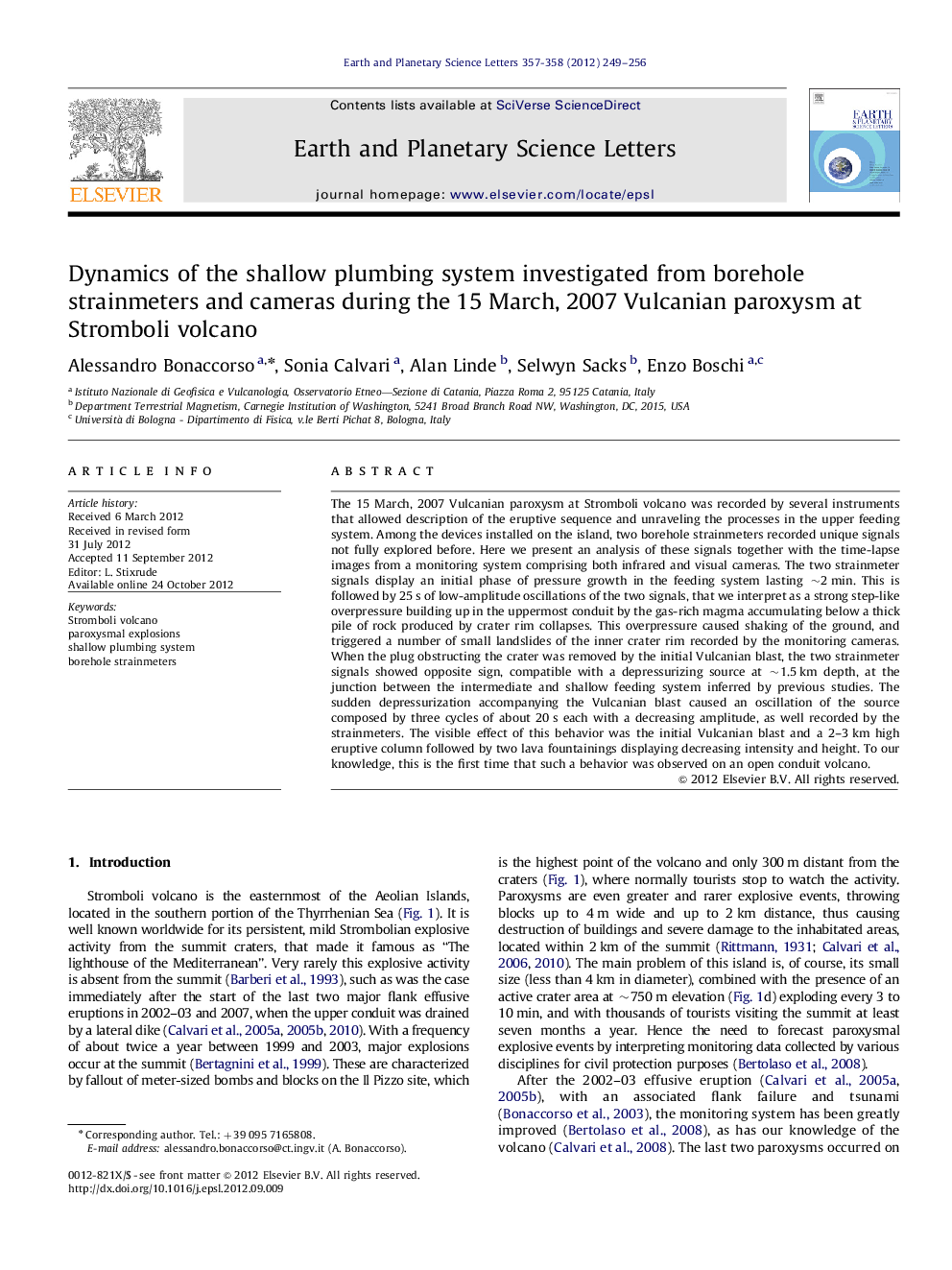| Article ID | Journal | Published Year | Pages | File Type |
|---|---|---|---|---|
| 4677296 | Earth and Planetary Science Letters | 2012 | 8 Pages |
The 15 March, 2007 Vulcanian paroxysm at Stromboli volcano was recorded by several instruments that allowed description of the eruptive sequence and unraveling the processes in the upper feeding system. Among the devices installed on the island, two borehole strainmeters recorded unique signals not fully explored before. Here we present an analysis of these signals together with the time-lapse images from a monitoring system comprising both infrared and visual cameras. The two strainmeter signals display an initial phase of pressure growth in the feeding system lasting ∼2 min. This is followed by 25 s of low-amplitude oscillations of the two signals, that we interpret as a strong step-like overpressure building up in the uppermost conduit by the gas-rich magma accumulating below a thick pile of rock produced by crater rim collapses. This overpressure caused shaking of the ground, and triggered a number of small landslides of the inner crater rim recorded by the monitoring cameras. When the plug obstructing the crater was removed by the initial Vulcanian blast, the two strainmeter signals showed opposite sign, compatible with a depressurizing source at ∼1.5 km depth, at the junction between the intermediate and shallow feeding system inferred by previous studies. The sudden depressurization accompanying the Vulcanian blast caused an oscillation of the source composed by three cycles of about 20 s each with a decreasing amplitude, as well recorded by the strainmeters. The visible effect of this behavior was the initial Vulcanian blast and a 2–3 km high eruptive column followed by two lava fountainings displaying decreasing intensity and height. To our knowledge, this is the first time that such a behavior was observed on an open conduit volcano.
► A new source for paroxysmal eruption at Stromboli is revealed. ► The data display 3 oscillatory cycles corresponding to 3 eruptive pulses. ► Each pulse comprises a decompression of the source followed by a pressurization. ► We infer a source of paroxysms located at 1.5 km depth. ► A comparison between strainmeter data and cam images is provided.
